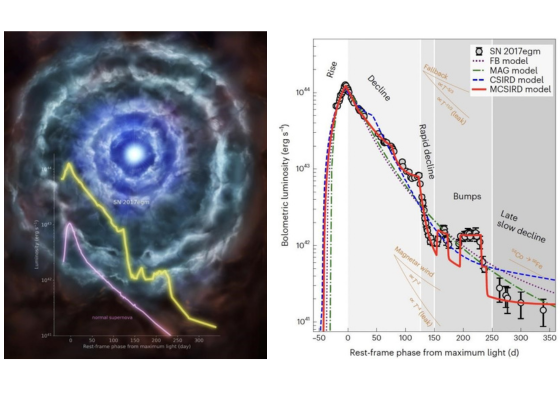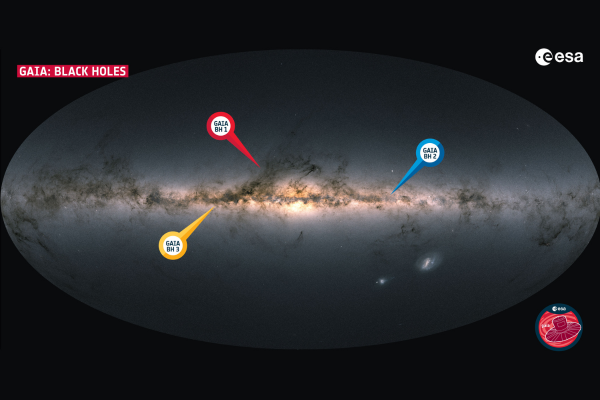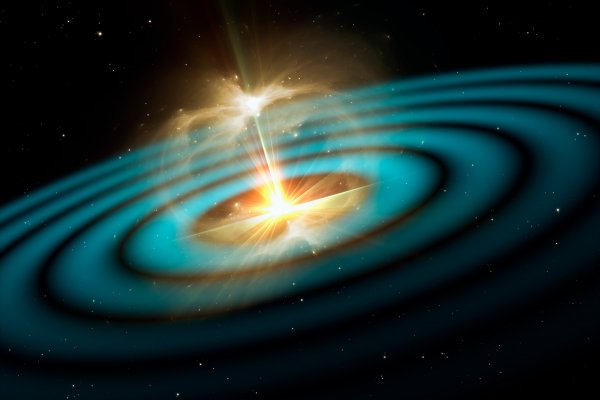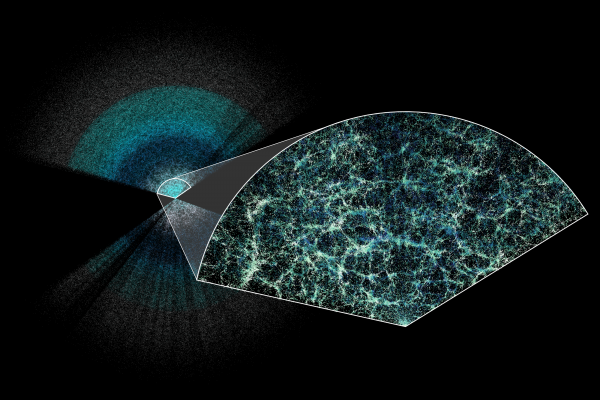At the end of their lives, massive stars usually undergo core-collapse and explode in a highly energetic burst called supernova. However, what happens to very massive stars with more than 100 times the mass of the Sun? How do they evolve and explode? How are they related to the brightest supernovae in the universe - superluminous supernovae (SLSNe)?
Prof. Xiaofeng Wang's team of Tsinghua University, in collaboration with national and international research teams, has monitored the nearby superluminous supernova SN2017egm for more than one year, revealing its extremely complex luminosity evolution (Figure 1).

By fitting the total luminosity evolution of the object with various kinds of energy source models, the team found that such a “bumpy” light curve mainly originated from the interaction of material ejected during the supernova explosion with four shells of circumstellar material (CSM). The existence of these CSM shells reveals that, right before the final collapse, the progenitor star of the supernova experienced frequent mass ejections with an average rate of 1-10 solar masses per year. Such a frequent and massive mass ejection is inconsistent with ordinary stellar wind and binary interaction models, but they are likely driven by a mechanism called pulsational pair-instability (PPI).
Combining these models, the initial core of the star is estimated to be about 50 solar masses. This core lost 7-8 solar masses during the PPI phase, when it produced the four shells of circumstellar material, and it ejected 2-3 solar masses of material in the final burst. During this last phase, the ejected material interacted with the pre-existing circumstellar shells powering one of the most luminous stellar explosions observed in our Universe and leaving behind a corpse consisting of a black hole of about 40 solar masses.
This has important implications for the formation of the tens of solar masses black holes, which have been recently detected by LIGO-Virgo gravitational wave observatories. This work shows that such heavy black holes can be produced through the mentioned mechanisms, and not only via the merger of lighter black holes.
In order to trigger the PPI mechanism, stars need to have a very heavy helium core, which, according to the single stellar evolution theory, usually evolves from a massive star with a low metal abundance. However, the progenitor star of SN2017egm is located in a metal-rich environment, which opens up many questions about its mysterious origin.
“We got really excited about SN2017egm, because in contrast to previous superluminous supernovae, which usually exploded in dwarf galaxies, its host was a large spiral galaxy. This challenged all our previous assumptions about how SLSNe are formed.” said Nadia Blagorodnova, member of ICCUB who contributed to the study.
This supernova could have originated from a metal-rich progenitor with greatly reduced mass-loss rate before oxygen burning stage, or a metal-poor star that somehow exploded in a metal-rich host galaxy, or even from the merger product of two massive stars. Which one of these scenarios is most plausible is still to be seen.
“The research of this supernova is of great significance for testing current theory of stellar evolution and explosion, and for understanding the origin of superluminous supernovae and massive stellar-mass black holes”, says Dr. Lin, lead author of this work.
Collaborators
The collaborators of this paper include Prof. Xiaofeng Wang's research team at Tsinghua University, Dr. Lin Yan and her colleagues at California Institute of Technology, Prof. Avishay Gal-Yam of Weizmann Institute of Science, Prof. Alexei Filippenko’s research team at University of California, Berkeley, Dr. Ragnhild Lunnan at Stockholm University, Prof. Shuhrat A. Ehgamberdiev's research team at Ulugh Beg Astronomical Institute and National University of Uzbekistan, Prof. Licai Deng’s team at China West Normal University, Dr. Nadejda Blagorodnova at the Institute of Cosmos Sciences of the University of Barcelona, Dr. Jicheng Zhang at Beijing Normal University, Prof. Jujia Zhang at Yunnan Observatories, Dr. Peter Brown at Texas A&M University, Prof. Lin Xiao at Hebei University and Dr. Lingjun Wang at Institute of High Energy Physics. The work of Prof. Xiaofeng Wang is supported by the National Natural Science Foundations of China, the Scholar Program of Beijing Academy of Science and Technology and the Tencent Xplorer Prize.
References:
Lin, W., Wang, X., Yan, L. et al. A superluminous supernova lightened by collisions with pulsational pair-instability shells. Nat Astron (2023). https://doi.org/10.1038/s41550-023-01957-3



